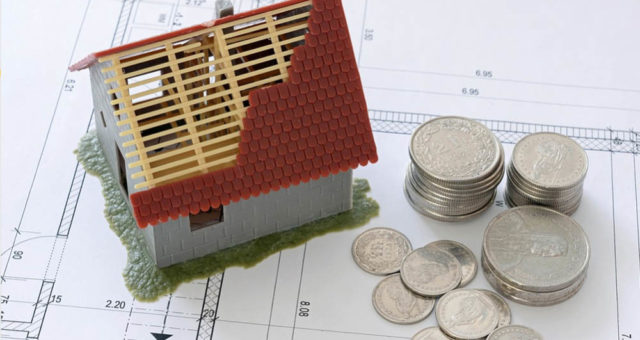
How to Save for Down Payment of Your Dream Home
One of the aspirations and goals that top’s almost everyone’s life accomplishment is purchasing a “Dream Home”. But fulfilling this dream is no doubt an expensive proposition and also the biggest investment for most families.
While you are not required to cover the entire purchase amount for your house up front you should come up with a substantial amount of cash before you close on your house. The biggest closing expense of all other expenses like the home inspection, lender appraisal or title insurance is your down payment. This will play an important and decisive role in whether you can close on your dream house or compromise with the best house you can afford on your budget.
When thinking about how to save for down payment,imagining a lump sum of money to buy property may sound like a myth or legend. But with a good dose of determination and patience, it is possible to get there without giving up every simple pleasure in life.
So how will you save? Here are eight steps that will help you discover simple tricks to save for your down payment in the smartest way possible and have enough money when it is time to get your mortgage.
-
Step 1 : Determine Your Expected Down Payment and Timeframe
Before you start your savings journey you will need to map out your goal. Your first step is to determine how much you need to save. You should consider the following when figuring out how much you will need: The size and type of property you want and the cost of that type of property in your area. You should also consider what percentage you will need for your down payment.
You may not actually need much down payment as lenders will accept far less with the purchase of mortgage insurance. You could also check if your state has a first-time homebuyers program which offers smaller down payments and lower rates to the young and hopeful homebuyers. Besides this, there are also many loans like the FHA Loans that will accept a down payment of 3.5%. But you will have to consider the pros and cons of using this type of loan.
However, financial advisors recommend that the ideal amount that you should save is 20% of the property value and another 3% for closing costs. According to Investopedia, by saving this much for your down payment you will avoid monthly payments for private mortgage insurance(PMI) which is about 0.3% to 1.2% of your loan amount. Besides this, you will also be approved for a mortgage, get a lower interest rate, and have more equity in your home from the start.
-
Step 2: Build Flexibility into Your Savings Plan
When you are saving money for down payment it is important to build flexibility into your savings plan. Before saving for your down payment you should make sure that you have an emergency fund as there will be other demands on your finances like major car repairs, temporary loss of job or uncovered medical bills. You will have to be ready when they happen as they will not magically stop just because you have a goal of saving money for your down payment.
Keep the emergency fund well-stocked as you will have to simultaneously prepare for predictable expenses such as replacing your car.
-
STEP 3: The Best Place to Put the Money you are Saving for a Down Payment.
You should examine your budget and determine how much you can afford to save each month. Then you will have to make it happen preferably when you receive your paycheck or direct deposit.
You should not try to invest this amount in the stock market or loan it to a real estate investor to get a high rate of return as this is a recipe for disaster.
The most popular and convenient way to save money is to transfer the certain percentage of your regular pay you have decided on into a special online savings account. You could save this at the same bank or credit union where you already have an account.
You should also set up an automatic direct deposit into your savings account. This will not only make the process automatic but your money will move from your paycheck to your savings account without you even see it happening.
However, you must be committed never to use these savings for any purpose other than down payment.
-
Step 4: Lower Your Expenses
You should review your expenses and flex your budgeting muscles to tighten your spending temporarily while you work on saving up cash for your dream home. You will be amazed as to how much money you can save by paying attention to your spending. You can save a significant amount by:
- Taking a break from the gym.
- Avoiding eating out on special occasions.
- Trimming your clothing budget.
- Buying generic brands at the grocery store:
- Cutting the cable
- Selling your old stuff by taking advantage of online sites and old-fashioned garage sales.
- Skipping your vacations for a year.
-
Step 5: Bank those Windfalls
You can shorten the process of saving money for down payment or make it easier by banking on periodic windfalls.
- Every time you get an income raise, do not fall a victim to lifestyle inflation by upgrading your car or apartment but increase the money you are automatically transferring into your savings account. You should ask yourself if you can keep living a simpler life for a few more years so that you can invest it in your dream home.
- Similarly, tax returns or yearly bonus are very tempting. You would like to buy things you have been eyeing like a big TV, but this should go straight to your savings account.
- Large commission checks or even the sale of personal assets can also be transferred to your savings account.
These steps will not only fuel your momentum but also put your goal within sight without you feeling the burden of penny-pinching. It can also chop off a couple of years off your savings timeframe.
-
Step 6: Boost Your Income with a Side Hustle or by Working on a Second Job
If you are saving for a down payment then this is good advice. It does not have to be forever. You can pick up an evening or weekend retail job around the holidays for some weeks and help to build up your savings.
You can also consider many ways to make money from home depending on your unique skills, assets or amenities you have at your disposal. Here are some ideas:
- Freelance writing, editing, web development and design.
- Teaching classes through online portals.
- Tutoring if you have advanced degrees and live in a big city. You can earn about $30-40 an hour.
- Working as a remote customer service representative, virtual assistant, or a technical support professional.
- Driving for a Lyft or Uber.
-
Step 7: Press Pause or Borrow on Retirement Savings.
If you have already started saving for retirement and planning to buy a house (in the next two years or less), you can temporarily stop these savings and redirect those funds towards your down payment savings account.
A word of warning: you should not borrow from or cash out your retirement accounts, as you will not only get hit with taxes and early withdrawal penalties but it will also cripple the longtime growth of your retirement savings. This mistake can cost you hundreds of thousands of dollars at retirement.
However, you could look for penalty-free withdrawals for home buyers in your retirement plan. Many profit-sharing or company-sponsored 401(k) plans allow employees to borrow against savings so that they can purchase a home. Your Payroll or Human Resources department can help.
-
Step 8: Attack Credit Card and High-interest Rate Debt ASAP
It may sound counterintuitive to pay down your debts when you are saving up for a down payment, but this is not so because high-interest debt can be a huge drain on your finances and limit your ability to save. Let us say that you have a high-interest credit card that is charging you 14% and you are saving money in a savings account which is getting you around 1% . This will be a brutal 13% spread. So you should try to pay down these debts as soon as possible and put your homeownership on hold until you pay off your high-interest debts.
You can start with your high-interest card first and when you have paid the entire balance you could close that card and proceed to pay off the next. You could also transfer your credit card balances to a card with the lowest interest rate.
Another thing you could do is to take advantage of 0% balance transfer offers so that you get a little extra breathing room. But you should not do this if you plan to buy a house in the next year or so as it would trigger a hard inquiry on your credit report and can bring down your score a few points.
Buying a home is a long process and requires a good chunk of your savings. Saving for down payment will be a practical test to prepare both your psyche and finances for extra expenses that homeownership will bring.


